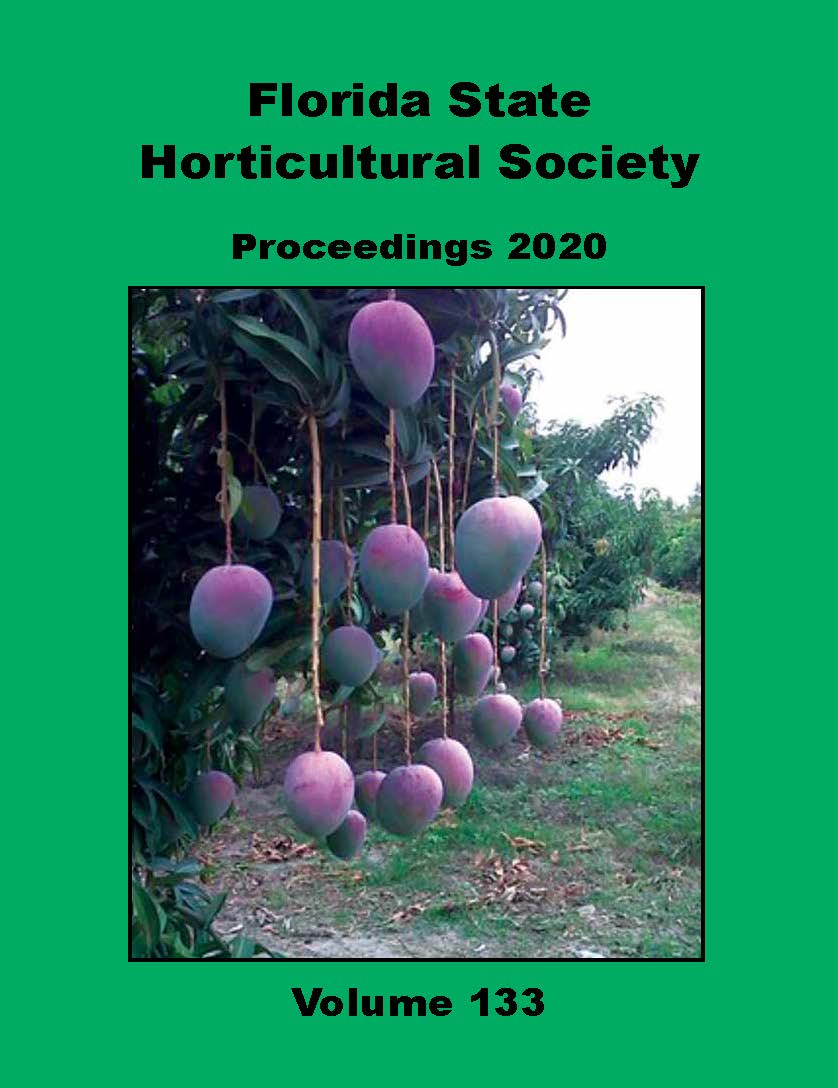Influence of Elevated Manganese Rates on Growth Parameters, Nutrient, and Biomass Accumulation of HLB-affected Trees In Florida
Abstract
Enhancing nutrient uptake and tree health play an important role in managing huanglongbing (HLB) affected citrus
trees in Florida. A greenhouse experiment was established to evaluate the effect of varying rates of manganese (Mn) on
growth and development of 1-year-old HLB-affected sweet orange (Citrus sinensis) trees in October 2018 at the University
of Florida IFAS (UF/IFAS)Citrus Research and Education Center in Lake Alfred, FL. Fifty percent of the trees were
graft-inoculated with the HLB pathogen and the rest of the trees were used as the HLB-free (NHLB), control trees.
Four treatments were applied on both sets of the trees in a randomized complete block design with 7 replicates. Data
including trunk diameter, tree height and leaf samples were collected, processed and analyzed from trees treated with
from four treatments, 0.0 kg·ha-1 Mn (Control), 5.6 kg·ha-1 Mn (1×, the UF/IFAS recommended rate), 11.2 kg·ha-1 Mn
(2× UF/IFAS recommended rate), and 22.4 kg·ha-1 Mn (4× UF/IFAS recommended rate) on HLB- and NHLB-affected
citrus trees. All the other essential nutrients were maintained at current recommendations in all the treatments. Leaf
Mn concentrations, tree height and trunk diameter were analyzed by year with repeated measures in SAS-GLIMMIX.
Leaf-Mn concentrations were significantly different (P < 0.0001) among Mn rates, and across sampling times in both
HLB and NHLB trees in 2019. In both HLB and NHLB-affected trees, the Mn rate of 22.4 kg·ha-1 Mn recorded the
highest leaf Mn concentration with the least square mean (LSM) of 1131 μg·g-1 of dry weight. Tree height and trunk
diameter presented significant differences across sampling times in both HLB- and NHLB-affected trees in 2019. The
11.2 kg·ha-1 Mn rate increased tree height in HLB-affected trees across sampling-time, while the 22.4 kg·ha-1 Mn rate
increased the trunk diameter of HLB-affected trees. The results presented in this study show that HLB-affected trees
would require higher Mn concentrations than healthy trees (NHLB), for similar physiological functions. The results
from this study support higher Mn treatments; specifically, 11.2- and 22.4-kg·ha-1 Mn (2× and 4×, respectively) than
the UF/IFAS recommendation for better tree growth in HLB-affected trees.

